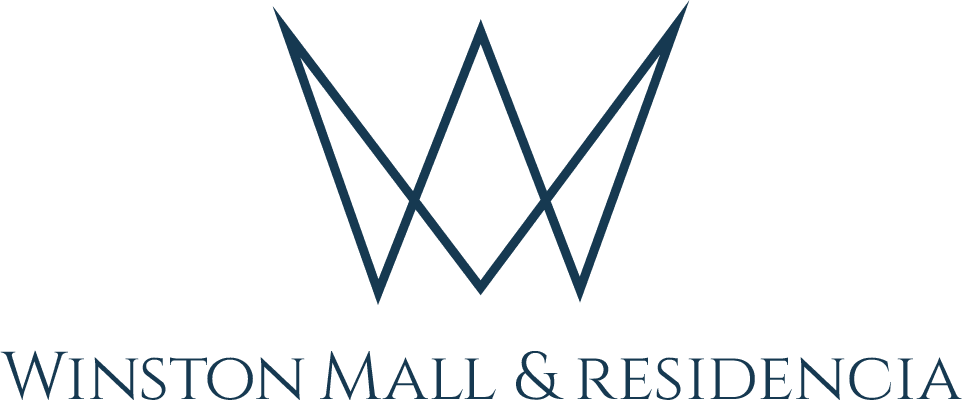House flipping has become an increasingly popular way to make money in real estate over the past few years in Pakistan. As housing prices continue to rise across major cities like Lahore, Karachi, and Islamabad, more and more investors are seeing the potential profits that can come from buying, renovating, and quickly reselling homes for top dollar.
However, house flipping also comes with its fair share of risks and requires extensive market knowledge. For those considering getting into the house flipping game in Pakistan, there are several key things you need to know first.
In this blog post, I’ll provide an informative overview of the house flipping landscape in Pakistan – the opportunities, challenges, and tips for being successful. I’ll also share inspiring stories of successful house flippers in Pakistan who have managed to build small fortunes on well-executed flips.
My goal is to give Pakistani readers an engaging insider’s perspective on house flipping that helps you make smarter decisions if you plan to try flipping yourself. With the right information and preparation, house flipping can be an extremely lucrative endeavor in Pakistan’s fast-growing real estate environment.
Table of Contents
ToggleWhat is House Flipping?
House flipping is the process of purchasing a property, renovating or remodeling it, and then reselling it for a profit. The goal is to complete this process quickly, usually within a few months or up to a year.
Flipping relies on the investor’s ability to identify properties with potential, improve their condition through renovations, and sell them at a higher price to turn a profit quickly. It is a form of real estate speculation that involves buying and improving properties for resale.
The key aspects of house flipping include:
- Buying – Finding undervalued or distressed properties priced below market value that have potential for renovation and resale at a higher price.
- Rehabbing – Making significant improvements and renovations to increase the property’s value. This may include repairs, remodeling, cosmetic upgrades, or adding new amenities.
- Reselling – Quickly relisting and selling the revamped property on the market for a profit margin above the purchase and renovation costs.
Successful house flipping relies on accurately gauging property values, setting realistic renovation budgets, having good renovation skills, and timing the purchase and sale in tune with housing market trends.
How House Flipping Works?
The basic process for successfully flipping a house involves several key steps:
1. Identifying a viable property: The first step is finding a suitable undervalued property in a location with good resale potential. Investors analyze factors like pricing, neighborhood trends, comparables, and renovation costs.
2. Securing financing: Flipping investors need to secure financing to purchase and renovate the property. Hard money loans, home equity loans, cash-out refinancing, or partnering with other investors are options.
3. Purchasing the property: Make an offer and negotiate the purchase deal. Having a good real estate agent is key during this stage.
4. Renovating the property: Improvements like kitchen/bathroom upgrades, flooring, paint, landscaping increase the home’s value. Work with reliable contractors to complete renovations on time and within budget.
5. Listing and reselling: List the flipped property with a competitive asking price. Market it effectively to generate buyer interest and sell it within the target timeline.
6. Closing the deal: Complete the sale transaction. Repay renovation loans and fees and collect the profit.
On average, the house flipping timeline from purchase to resale ranges from 3-12 months depending on the extent of renovations needed.
Things You Need to Know about House Flipping
House flipping can be lucrative if done right, but also carries risks. Here are some key things to know:
Market Analysis
Thorough market research and analysis are critical before buying a property to flip. Investors must track metrics like recently sold comparables, average days on market, inventory levels, pricing trends, and buyer demand in the target area. This helps determine accurate property valuations and projection profits.
Establish a Spending Plan
Create a detailed renovation budget and timeline. Factor in the purchase price, estimated rehab costs, holding fees, sales costs, and desired profit goals. Conservative cost estimates are best to avoid going over budget.
Locate the Ideal Property
Finding the right property to flip is crucial. Look for outdated but structurally sound houses in desirable locations below market value. Evaluate renovation potential and scope of work required.
Make a Reasonable Offer
Make sure your offer price gives enough room for sufficient profits after renovations. Submit a competitive offer with favorable terms to the seller to avoid overpaying.
Establish a Deadline
Determine a target timeline for the entire flip, including purchase, renovations, listing, and sale. Shooting for a 3-6 month timeline is recommended to flip properties efficiently.
Ideal House Flipping Timeline
Here is a typical house flipping timeline:
- Purchase: 0 – 30 days
- Make offer, negotiate deal, close purchase
- Rehab: 30 – 90 days
- Complete renovations, repairs, staging
- List: 90 – 120 days
- List property on MLS, market home
- Sale: 120 – 180 days
- Accept offer, close sale transaction
Total: 4-6 months from purchase to sale
Locate Reliable Contractors
Vet and build relationships with contractors who can complete renovations on time and on budget. Get references and check reviews. Hire local experts you can trust.
Get Your Property Sold
Price the home competitively and market it aggressively through MLS listings, open houses, online ads and social media to generate interest. Price reductions may be needed to incentivize offers.
Common House Flipping Mistakes to Avoid
While house flipping can be profitable when done correctly, it does come with risks. Here are some common mistakes to avoid:
- Not evaluating repairs/renovation costs accurately: Underestimating repair costs is a huge flipping mistake. Work with experienced contractors to get realistic cost estimates.
- Overpaying for the property: Don’t overbid and pay too much for a property based on hoped-for future valuations. Stick to justifiable numbers.
- Taking on too much work: Don’t bite off more than you can chew. Stick to cosmetic renovations rather than major structural changes.
- Running over the budget: Going over your renovation budget can eat into your profit margin substantially. Pad your budget with a 10-20% contingency fund.
- Getting the wrong financing: Understand financing options and their terms to avoid higher interest costs. Shop around for the best rates.
- Over-renovating: Don’t over-improve for the neighborhood. Make updates that align with the area and target buyer demographics.
- Listing at the wrong price: Set a listing price in tune with comparable properties. Price too high and you’ll wait longer to sell.
- Holding too long: Take too long to renovate or can’t sell quickly enough, holding costs add up and hurt profit.
70% Rule in House Flipping
Experienced house flippers follow the 70% rule to maximize profits while minimizing risks. This involves:
- Buying a property max 70% of ARV (after repair value)
- Limiting renovation costs to 70% of purchase price
- Ensuring total costs stays under 70% of ARV
Following the 70% rule helps ensure there is enough profit margin to make the flip worthwhile. It prevents overpaying or over-renovating. Sticking to this guideline will make house flipping much safer.
For example, on a property with $300,000 ARV, you would want to:
- Buy for no more than $210,000 (70% of $300,000)
- Keep renovation costs under $147,000 (70% of purchase price)
- Maintain total costs under $210,000 (70% of ARV)
This allows for $90,000+ in profit potential (30% of ARV).
How Investors Make Money by Flipping?
There are two ways house flippers can earn a profit:
1. Appreciation from Market Value Increase
If the market value of the property rises during the time you own it, you can make money by selling higher than you purchased it for. Even without renovations, market appreciation over a short timeline can mean profits.
2. Added Value through Renovations
Improving and renovating the property substantially increases its resale value. The right renovations can allow you to sell for tens of thousands more. Cosmetic and structural upgrades boost value.
Successful flip investors combine both strategies. They buy below market value in rising markets and enhance value further through renovations.
Profits from flipping come from the spread between the purchase price + renovation costs and the final sold price. After factoring in taxes, fees and holding costs, experienced investors typically target 10-30% profit margins per flip.
In Summary
House flipping can potentially be a very lucrative real estate investing strategy in Pakistan given the rising housing market conditions in cities across the country. However, like any investment, it also carries risks that need to be managed.
By understanding the key steps in the flipping process, conducting thorough market research, setting realistic budgets, leveraging expert contractors, following guidelines like the 70% rule, and timing the market well, investors can maximize their chances of flipping success.
While not for complete beginners, house flipping can become a viable side business for those willing to put in the work, carefully calculate risks, and build the right knowledge and skills. With the basics covered in this guide, you should now have a foundation to get started exploring your first flip opportunities in Pakistan.
FAQs
What are the best cities for flipping houses in Pakistan?
The top cities are Karachi, Lahore, Islamabad, Rawalpindi, Faisalabad, and Gujranwala. These major metro areas see strong housing demand and rising prices.
What is the average cost of flipping a house in Pakistan?
The purchase price plus renovation costs for a flip in Pakistan generally range from PKR 3 million to PKR 10 million on average. Total costs vary based on property size and scope of renovations.
How much profit margin can you make flipping houses in Pakistan?
Experienced flippers typically target a 10-20% profit on their investment in each flip. On a PKR 5 million flip, profits could range from PKR 500,000 to PKR 1 million.
How long does it take to flip a house in Pakistan?
The ideal timeline is 4-6 months from purchase to closing the sale. Timelines under 3 months are rare, while flips taking over a year usually yield lower returns.
What renovations add the most value?
Kitchen and bathroom remodels, flooring upgrades, painting, landscaping, facade upgrades, and added bedrooms/bathrooms add the most resale value.
Is house flipping legal in Pakistan?
Yes, house flipping is entirely legal in Pakistan. However, rapid successive buying and selling may be subject to capital gains tax.
What are the risks involved in house flipping?
Risks include inaccurate valuation, going over budget on renovations, inability to secure financing, holding costs if unable to sell quickly, and market fluctuations.
Winston Mall: please contact +92-314-5166334 or visit https://winstonmall.com/




